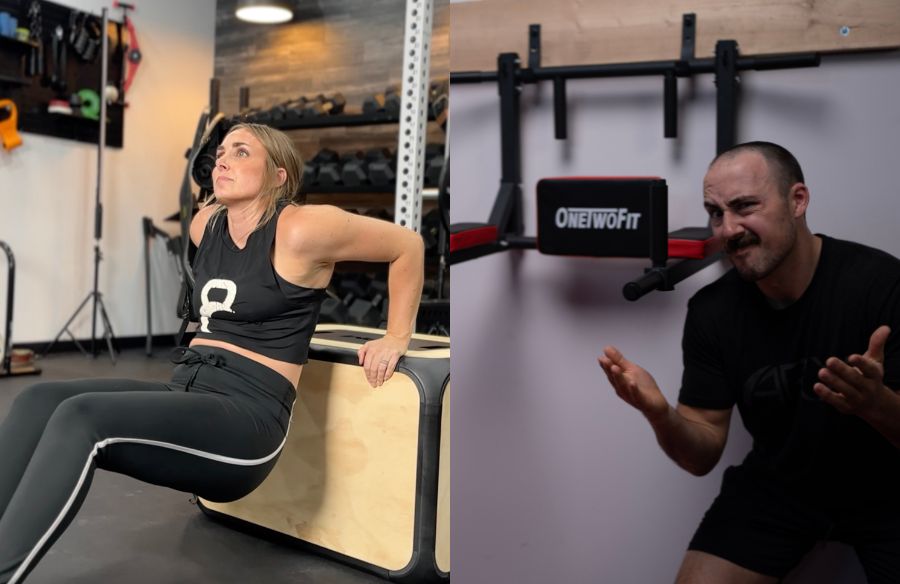We test and review fitness products based on an independent, multi-point methodology. If you use our links to purchase something, we may earn a commission. Read our disclosures.
Dip vs pull-ups sounds like a face-off, right? (By the way, “Face/Off” is an excellent movie if you missed this pop-culture reference.)
But it is not (a face-off) because dips and pull-ups are both excellent exercises that deserve a spot in most strength and conditioning programs. Pull-ups and dips are not complicated exercises like a barbell squat or deadlift—both exercises can be performed with just your body weight and gravity—but both require a certain amount of relative strength.
Dips have often been called the squat of the upper body because dips build strength and muscle in the chest, triceps, shoulders, and back. Performing dips will improve lockout strength for exercises such as bench presses, overhead presses, and Olympic lifts.
Pull-ups are right there with dips as they build strength and muscle in the lats and upper back, and real-world grip strength. Here we’ll do a mini deep-dive into both so you can be more informed and get the best out of these excellent strength exercises.
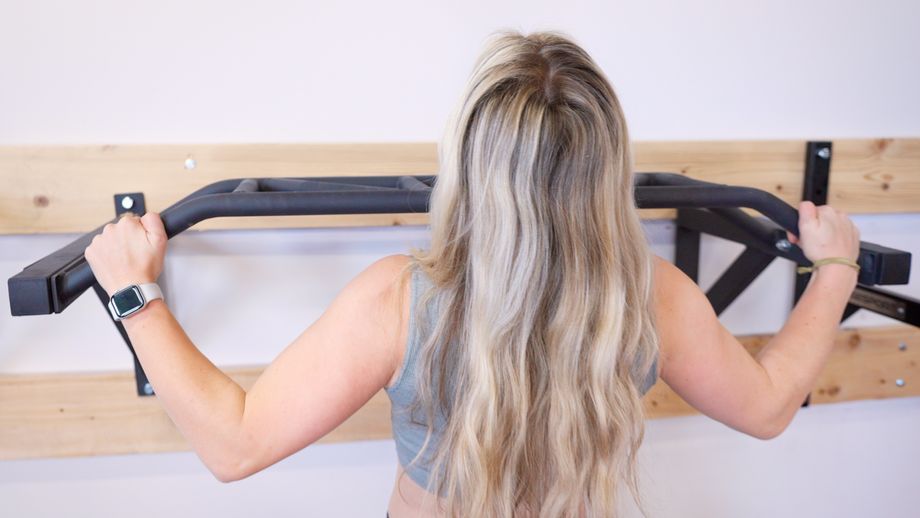
Dips
When you observe a lifter doing dips with a large amount of weight strapped to their waist, have you noticed the size of their triceps, chest, and shoulders? They are most likely big. Although dips can primarily target the chest, depending on how you perform them, the main reason many people do dips is to work the triceps.
Because the pectorals and anterior deltoids are involved, you can use more weight or do more reps to overload the triceps for size and strength gains. If you want to build size and strength in your upper body, you should do dips.
Doing dips will benefit you if you regularly do anything that involves elbow extension, such as sports that involve throwing or pressing to fend off an opponent.
What Muscles Do Dips Work?
Here are the primary muscles trained when performing dips
Triceps: The triceps are responsible for elbow extension. While dips target all three heads of the triceps, they mainly focus on the long and lateral triceps heads.
Pectorals: The chest muscles are trained by shoulder flexion and horizontal adduction, which brings the arms toward the midline. Although they train the entire pec major, dips primarily target the difficult-to-train lower chest fibers.
Front Deltoids: The anterior deltoids assist the pectorals with shoulder flexion, bringing the arms to lockout from a 90-degree angle.
Scapular and Shoulder Stabilizers: These muscles, like the rotator cuff, allow the primary muscles to do their job.
Pull-Ups
Pull-ups are similar to chin-ups except for one crucial difference: Pull-ups are performed with an overhand (palms facing away from you) grip which requires more shoulder mobility and grip strength and focuses more on the upper back, lats, and forearms and less on the biceps. Chin-ups, on the other hand, are done using an underhand (palms facing you) grip and have more of a focus on the biceps and lats.
RELATED: How To Do a Pull-Up
First and foremost, pull-ups are the most demanding vertical pulling exercise, as you are pulling yourself up using a weaker grip. Pull-ups, focusing on the upper back and lats, are a great exercise to build the V-taper most bodybuilders desire. Pull-ups are also the jam when building grip and core strength while adding strength and mass to your entire back.
If you ever find yourself hanging from a cliff, being able to perform a pull-up to save yourself will be great. Otherwise, pull-ups build pulling strength that directly carry over to daily living activities and other gym movements like deadlifts. If you are an Olympic lifter where overhead strength is needed to secure an overhead barbell, pull-ups will help with that, too.
RELATED: The Best Pull-Up Bars for Your Home Gym
What Muscles Do Pull-Ups Work?
Here are the primary muscles trained by performing pull-ups.
Trapezius and Rhomboids (upper back): The upper back muscles’ focus here is scapular adduction when the shoulder blades come together when you pull yourself up.
Latissimus dorsi (lats): During pull-ups, the lats perform shoulder extension and adduction.
Scapular and Shoulder Stabilizers: These muscles, like the rotator cuff, allow the primary muscles to do their job.
Biceps: The biceps assist the lats and upper back with shoulder extension via elbow flexion.
Forearms: Forearms have a double duty during the pull-up. First, they work to grip the bar, and they assist the biceps with elbow flexion.
Dips vs Pull-Ups: How to Get Started
Both with pull-ups and dips, it is you versus gravity, and you need a decent amount of relative strength—meaning how much weight you can lift compared to your body weight. Now, some lifters can jump straight in and perform both exercises without issues, but if you are new to both, here are a few things to consider:
- To do a pull-up, you first need to be able to perform chin-ups for reps.
- You require decent strength in your chest and triceps to perform dips well. If you cannot bench press a decent amount of weight or do push-ups without folding like a deck chair, start mastering both before hitting the parallel dip bars.
- Both moves require good shoulder mobility. If you have restrictions or shoulder issues, work on your mobility or use a regression for both, like the chin-up.
- Your anterior and posterior core muscles must be strong enough to keep a neutral spine and let the main muscles do their jobs when performing both movements. If you cannot hold the front plank for one minute or more, start with building core strength before attempting either.
- Because of the shoulder mobility required to do both exercises well, think twice before doing either if you have rounded shoulders or less than stellar standing posture.
How to Do a Dip
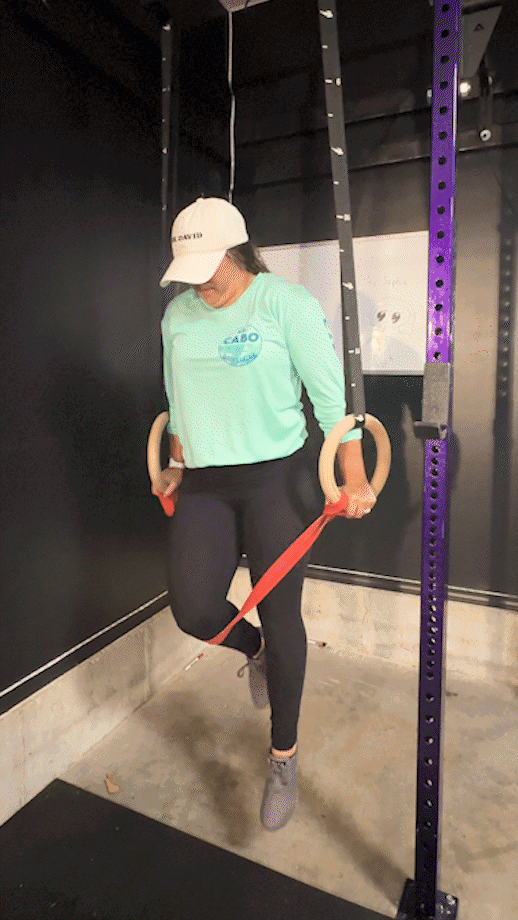
- Step up to the parallel bars or rings and grip them with your palms facing each other.
- With your arms straight, bend your legs up behind you so your weight is on your arms.
- Look straight ahead and engage your core and glutes to keep your spine neutral.
- Lower until your elbows are as close to 90-degree angles as you can get, depending on your shoulder mobility.
- Avoid excessively flaring your elbows outward, as this may increase the strain on your shoulders.
- Straighten your arms and push yourself up until your elbows are almost fully extended and reset in the starting position, then repeat.
Dip Modification: Bench or Box Bodyweight Dips
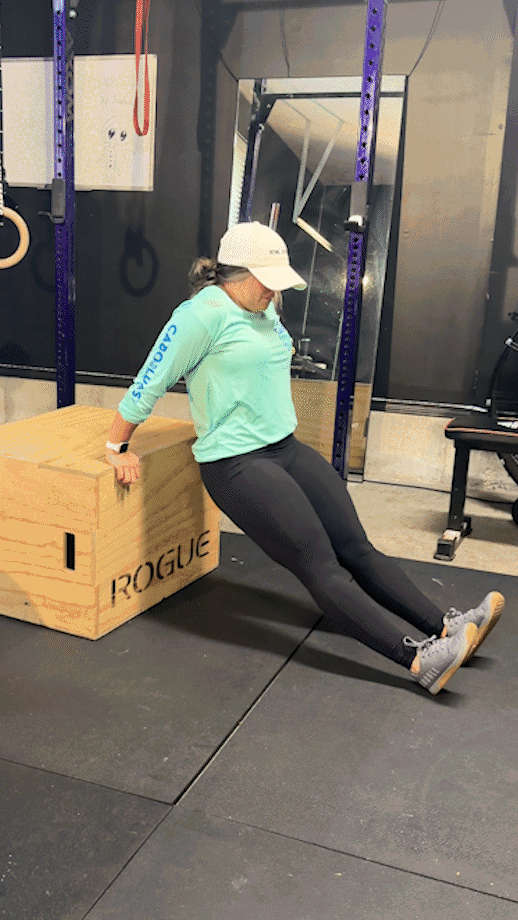
Beginners should start with the bench dip because it uses less of your body weight due to the change in body position (more horizontal and less vertical) while still training your triceps and chest. You can have your legs on another bench to make the move harder, or your feet on the ground with your knees bent at 90 degrees to make it a little easier.
Dip Progression: Ring Dips
Ring dips are a progression because this variation requires more balance and stability due to the instability of the gymnastic rings. This exercise increases muscular tension in the pecs and triceps due to the slight increase in range of motion while strengthening the shoulder and scapular stabilizers more.
How to Do a Pull-Up
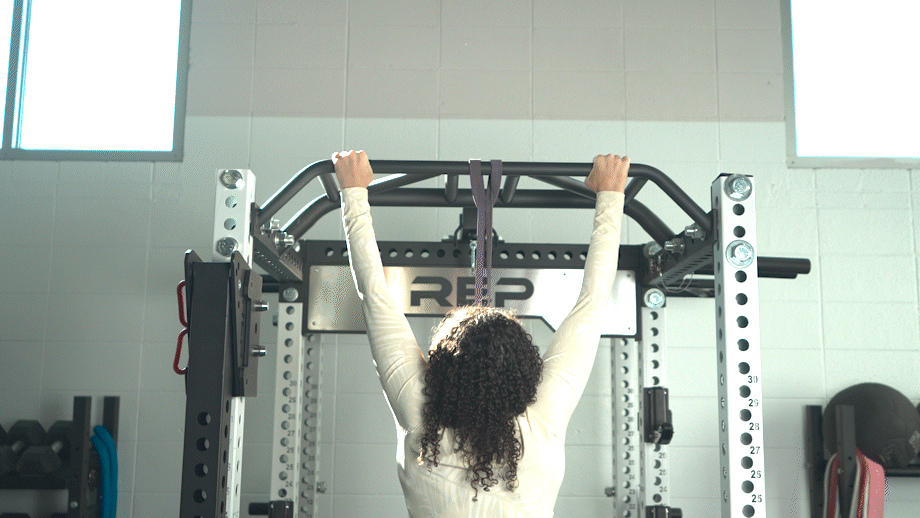
- Take an overhand, wider than shoulder-width grip on the pull-up bar. You can use a false grip (without thumbs) or a regular grip (gripping with your thumbs).
- Grip the bar tightly while relaxing your body into the dead hang position. You should feel a stretch in your lats.
- Initiate the pull-up by driving your shoulder blades down and back while you bend your elbows. Pull your upper chest to the bar while keeping your shoulders down and chest up.
- Slowly lower down until you are back in the dead hang position, then reset and repeat.
Pull-Up Modification: Band-Assisted Pull-Up
If you can’t do multiple pull-up repetitions, a good modification to try is a band-assisted pull-up. With a band-assisted pull-up, you loop one end of a resistance band around the pull-up bar and the other end under your foot or knee, then perform pull-ups as usual. This allows you to perform a pull-up without needing to support all of your weight, since the band is supporting some of it, making it easier to perform more reps.
Pull-Up Progression: Switch Grip Pull-Ups
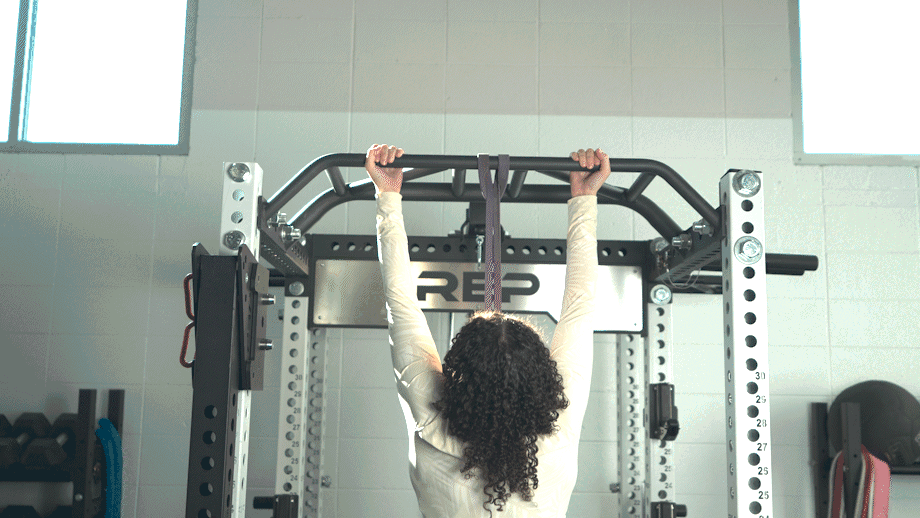
An underhand grip on one hand and an overhand grip on the other add a rotation component to an already difficult exercise. Your obliques engage in fighting this rotation, and you’ll need to do double the reps because you need to switch hands to work both sides. If not, you’ll be walking in circles all day.
Dips vs Pull-Ups: Final Thoughts
Dips and pull-ups are fantastic bodyweight exercises that can be modified or progressed, and you can add weight to both by using a dip belt. Because one exercise trains the chest and triceps and the other trains biceps and back, both can complement each other and be performed in the same total-body workout or strength training program. But keep in mind that to perform both well, you must have core strength, relative strength, and good shoulder mobility. If you’re not quite there, start by working toward being able to perform multiple reps of the modifications listed above. Both exercises are excellent options when your goal is adding size and upper body strength.
Dips vs Pull Ups: Q&A
Are dips as good as pull-ups?
It is easy to play the comparison game with exercises such as dips and pull-ups and think one is better than the other. But in this certified trainer’s opinion, they are equally as good and both deserve a slot in your programming. That being said, it really depends on what your goals are and what muscles you are targeting when deciding which exercises are best for you.
Which is more difficult, dips or pull-ups?
Both are challenging exercises that require a fair amount of relative strength to perform. But, due to the more vertical nature of the pull-up and the grip strength needed, it is the more strenuous exercise.
Which exercise is better than pull-ups?
This depends on the individual and their health and fitness goals. If you lack the shoulder mobility and grip strength to do pull-ups, then lat pull-downs and chin-ups will be better than pull-ups for you. If not, there is no better exercise to add muscle to your lats and upper back than the pull-up.
Can you get big from pull-ups and dips?
With the number of different muscle groups needed to do both exercises, it is possible to achieve muscle growth from pull-ups and dips. Once you can do multiple reps and sets with just body weight, try adding weight with a dumbbell or weight belt or vest to continue to build muscle in your upper body.
Further reading

What are the different types of creatine, and which type is the most effective? A dietitian explains what you need to know. Read more

Learn how colostrum supplements may increase muscle growth and other benefits of colostrum for athletes. Read more

The Rogue Deep Dish Platesare the first made in America cast iron weight plate that Rogue Fitness has released. Harkening back to York Milled Plates, the Rogue Deep Dish Plates are accurate, priced extremely well, and look as good as they perform on a barbell for squats, deadlift, bench, and any other movement you’d like to perform. If you like the aesthetics, they’re one of the best value iron plates available. Read more

Training in a home gym is awesome, but being able to work out in the fresh air is one of the best feelings there is. One of our readers built and detailed how he built one of the most epic outdoor gyms we've seen. Read more

